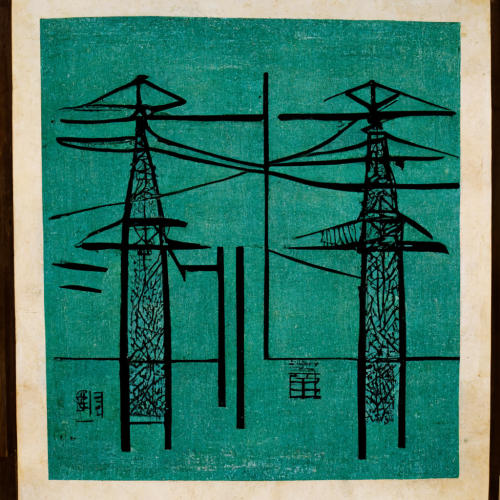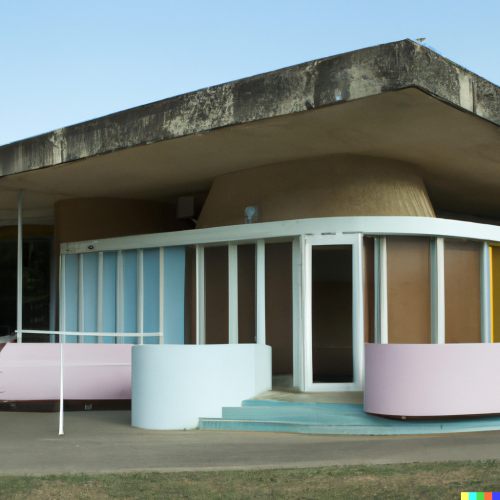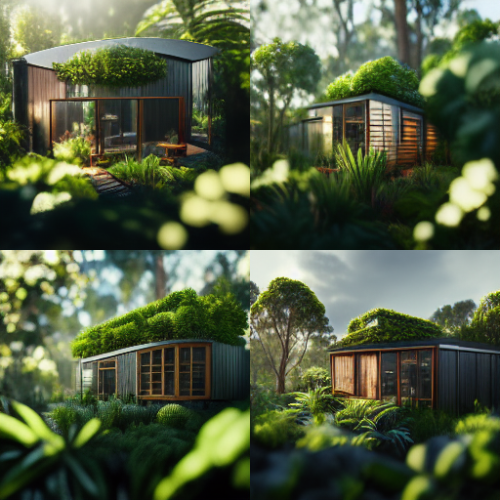ArticlesNovember 22nd, 2022
The Disruptive Potential of AI Image Generators for Design Professionals


Every other week, we witness the release of new AI image generators. These engaging and virally popular products let us create images based on a set of written prompts. Two large, happy dogs that enjoy breakfast at the local cafe? Boom - there's your artwork.

Two large dogs ordering coffee at the local cafe. Via DALL-E.
But despite the controversy, the creative potential is enormous. As colleagues and I explore these tools, we're starting to identify opportunities for design professionals. Here are some.
Redefining abstract concepts
Creative block is a thing. Some days, new concepts are hard to fathom, unpack and represent visually. What might be a good image representing a concept as abstract as service design, the engine of imagination, a regenerative city ambience, or resilient, reliable and affordable energy? Instead of browsing aimlessly for inspiration, we may just need a quick trigger to kickstart our creative problem-solving.

A woodblock print of resilient, reliable, affordable energy. Via Midjourney.
And as image generators rely on careful curation of commands, they let us apply a consistent aesthetic treatment. It helps to adhere to a style guide or brand identity. Or there may be a theme that you want to use across all images created in a creative workshop with your client.
Encyclopedia of styles
Image generators rely on millions of annotated images. These annotations describe the objects, colours, textures and styles on display. A world of opportunity arises as annotations are mixed and matched in new and unprecedented ways.
Leonardo Da Vinci may never have designed an electric vehicle, but image generators let us speculate about EVs in the 1500s. Or Sidney Nolan's take on comets above an Australian desert landscape. Or an ice cream parlour designed by Le Corbusier. How good does that ice cream parlour look?

An ice cream shop in a building designed by Le Corbusier. Via DALL-E.
Our studio-wide sharing of results has become a mechanism to educate others about do's and don'ts. But I'm inspired by the opportunity to learn about new styles and aesthetic traditions. Experiments from colleagues have introduced me to Lisa Hanawalt's work, the Japanese tradition of woodblock printing, and many more.
Exploration of options
Besides visualising abstract concepts, AI image generators are helpful tools to identify design possibilities. In my architecture days, I tended to conduct volume studies for new designs; quickly generate a dozen or so options to spark conversation.
Most generators let you do exactly that. For instance, I'm designing a new garden room, modern in appearance and with large glass panes. In no time Midjourney provided me with 24 ideas, some of which will undoubtedly inform detailed designs.

Lush Australian garden with a modern garden shed with large windows, surrounded by small trees, dense foliage. Via Midjourney.
The end of creativity?
AI image generators reveal new opportunities for creative practice. Their prompt-driven control enables poetry of commands, turning us into wordsmiths but requiring a solid understanding of the parameters that influence a particular image generator's output.
The technology is likely to accelerate design practice. But the examples show that the collective termination of creative genius is still a long way off. First, there is a need to address ambiguous copyright rules and the potential to cause harm at scale. Second, cost, instability, limited feature set, environmental impact of computing power, infancy of the technology and a need for human intervention remain blockers to such a radical move.
Ready to give it a go?
Signup via Discord and put Midjourney’s generator to the test. The intuitive /imagine command is the gateway to this AI technology. And recently, DALL-E has also opened up its technology to the public. DALL-E is known for its ability to generate more realistic and higher resolution imagery than any other generator currently out there. We’d love to see what you come up with.
